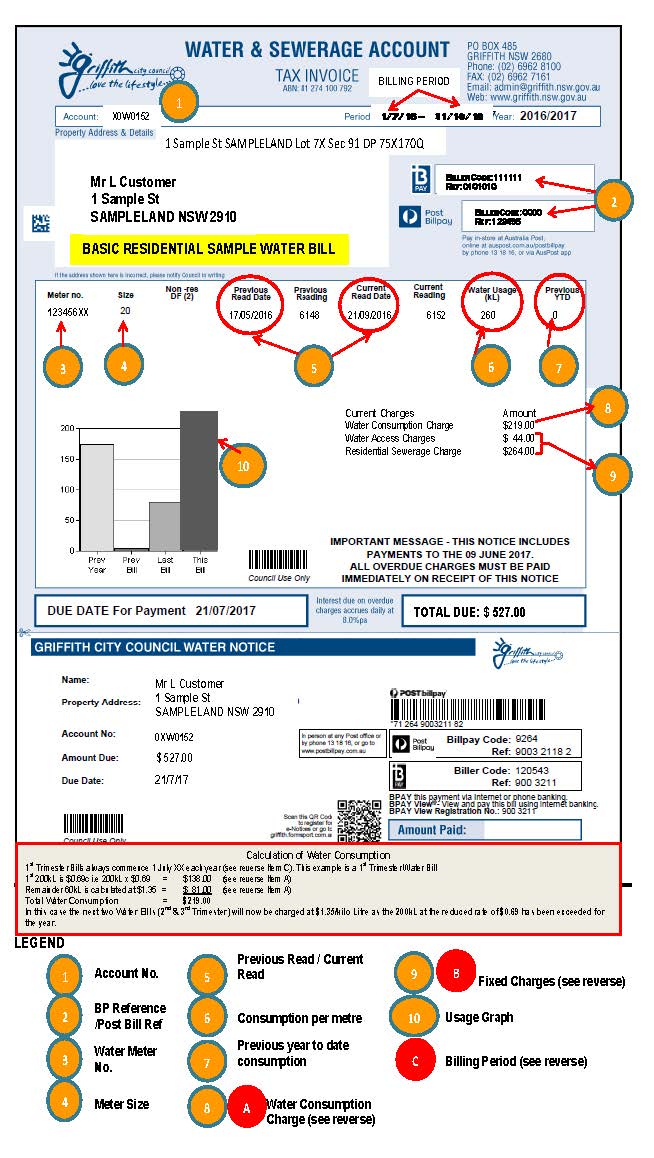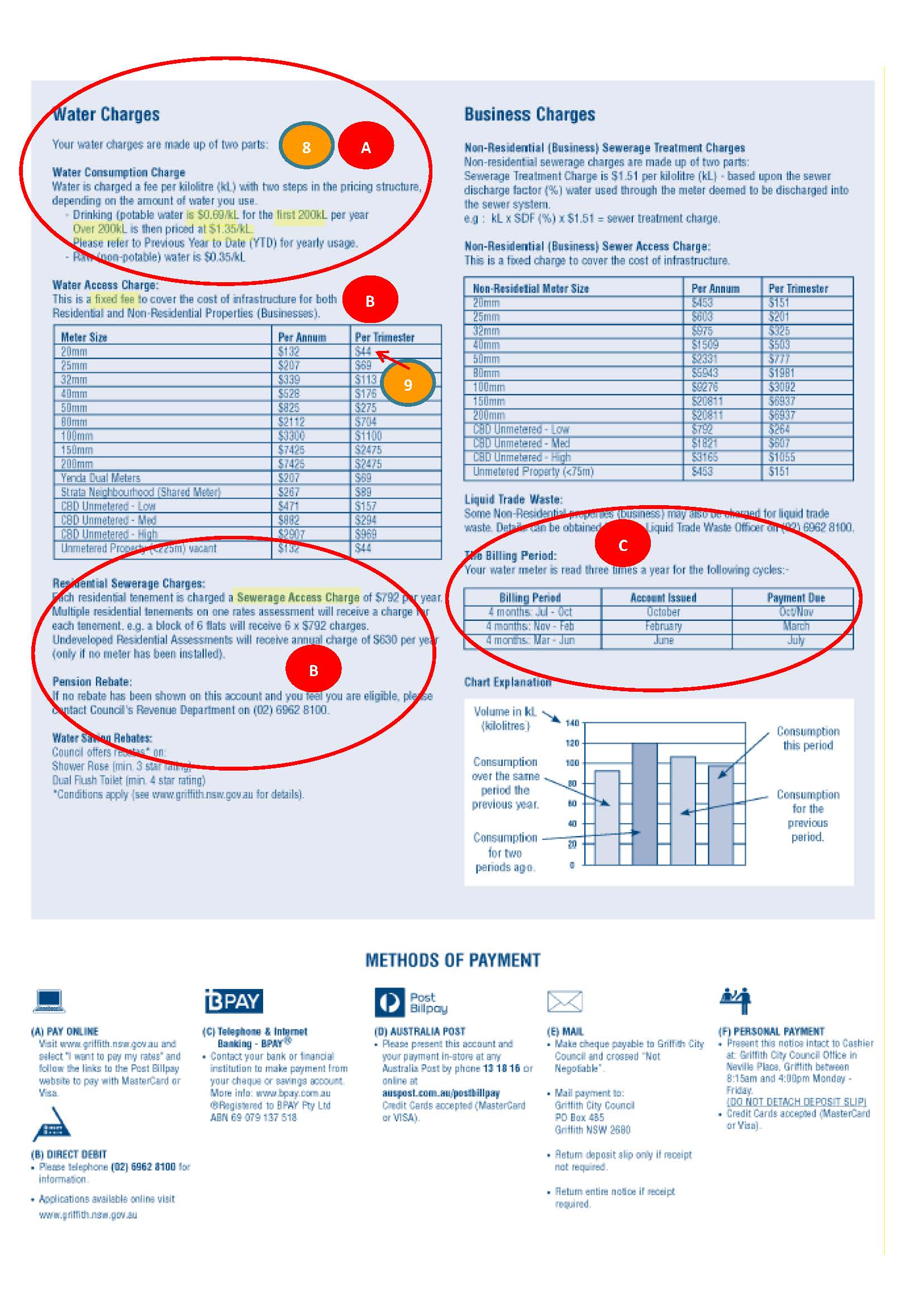4 March 2020
With around 10,000 water and sewerage bills landing, Griffith City Council is offering some useful advice to help understand them.
Notices are issued each trimester (three times a year), with Council acknowledging that the bills contain a lot of information.
Griffith City Council Director of Utilities, Graham Gordon, said it is important residents understand what it all means.
"A typical bill has three charges, the Water Consumption Charge, this is the amount of water you use, Water Access Charge and Sewerage Charges which are both fixed fees," said Mr Gordon.
"Your water bill will show how much water you used between your Previous Water Meter Read and your Current Water Meter Read. The bill also shows how much water you used in the previous period. This will vary depending on the times of year. For example you would expect higher consumption during the hot summer months."
Each water bill also has a graph showing the amount of water used for the current billing period (kilolitres) compared to the previous three billing periods.
Mr Gordon said there are a number of factors that may cause water bills to increase.
"Slight changes with your household consumption or an undetected water leak can impact on your bill. If you receive an unusually high water account it's important to know where to start looking," said Mr Gordon.
"You might want to look at any new water appliances or fittings that have been recently installed such as new irrigation, dishwasher, washing machine or evaporative air conditioner.
"If you've had leaks or plumbing work completed in the last 12 months, this could account for increased water use.
"You will also see water usage go up or down if your household occupancy number changes."
The Water Consumption Charge is based on the amount of water you use and the Water Access Charge is based on the water meter size to your property. Both are calculated so that Council can recoup the cost of the production (running of the water treatment plant) and delivery (through Council's water main network) of potable water to the customer
This also applies to the Sewerage Charge, it is charged either as Non-Residential or Residential.
Non-Residential assessments are charged an access charge (service fee) based on the size of the water meter and a treatment charge based on water kilolitres consumed multiplied by Sewerage discharge factor multiplied by treatment rate. Sewerage discharge factors have been determined by the type of business at the property. If you have concerns with your sewerage discharge factor then you are able to contact Council's Water and Wastewater Analyst on 6962 8100 to have this reviewed.
Residential Sewerage assessments are charged an access charge (service fee) which has been determined by the cost of providing infrastructure, upkeep and treatment to residences within Griffith City Council.
For a detailed rundown of what everything means on your Water and Sewerage bill go to Council's website www.griffith.nsw.gov.au
Is your water account higher than expected?
Below are some of the common reasons for unexpected water use:
Season - Water use tends to increase over the warmer months, so remember to compare with the same time last year, rather than with your previous bill.
Automatic watering systems - Automatic systems can be the forgotten source of water usage in many homes. They are the most common reason for unexpected water use, especially if they are programmed to turn on automatically each day and even operate in times of wet weather.
More people in the house - Have you had guests stay? Two extra people in your household will increase your water consumption by around 300 litres per day. Multiply that by a week or two and you will see a jump on your consumption graph.
Hidden Leaks - Leaks can occur anywhere on your property, they waste substantial amounts of water and may be hidden from view. To check for leaks, make sure that there is no water being used within the house or garden. Wait two hours and if the dials on your water meter are moving (when no water is being used), then there may be a leak in the pipework inside your property.








